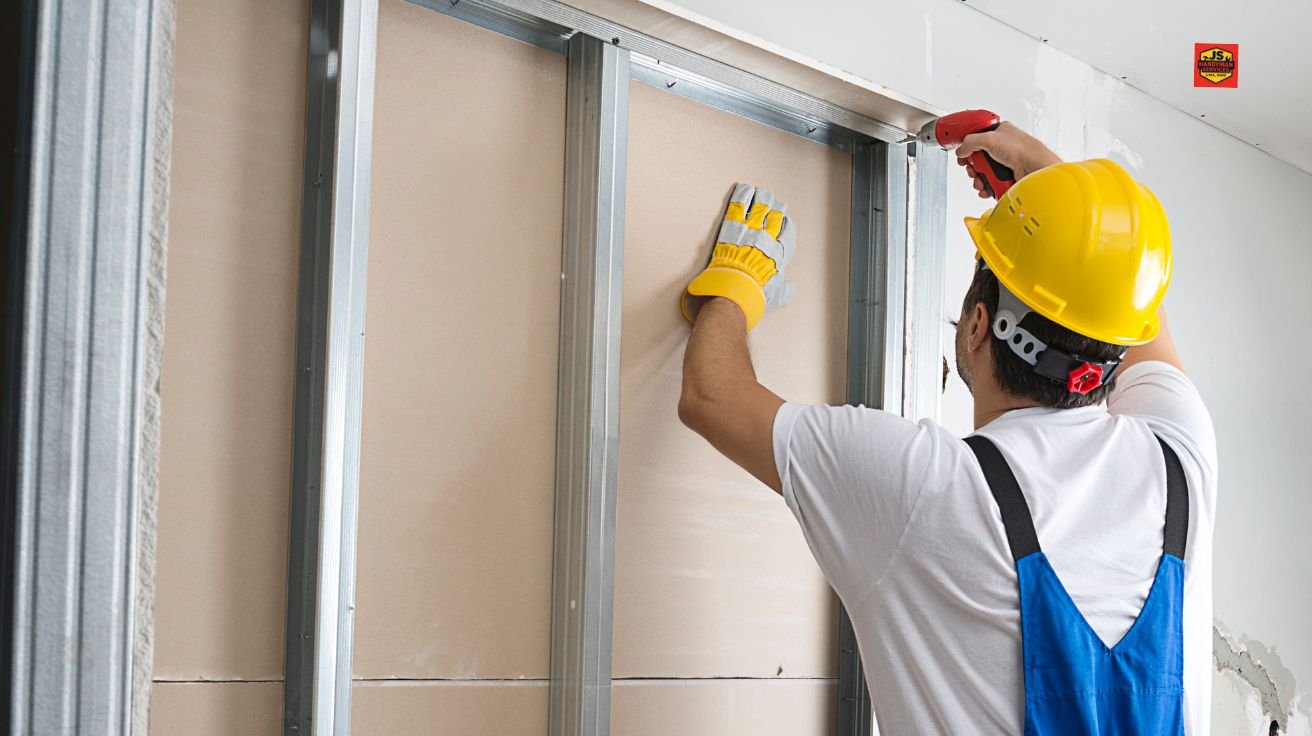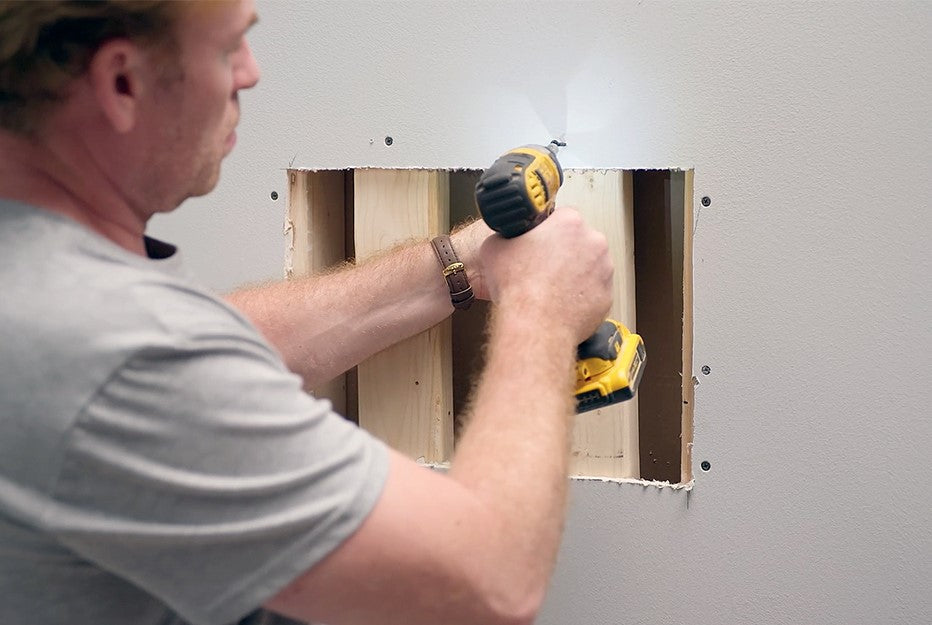Discover the Ideal Practices for Successful Drywall Fixing and Setup
The art of drywall repair service and installation calls for a blend of skill and accuracy. Mastering the important devices is essential for accomplishing a smooth finish. Comprehending the step-by-step procedure can make a substantial difference in the result. Appropriate strategies for mudding and taping are likewise crucial. What continues to be is the expertise of maintenance that guarantees long life. These components with each other produce a polished result worth discovering additionally.

Necessary Devices for Drywall Fixing and Installation
When embarking on drywall fixing and installation, having the right devices can greatly enhance the performance and high quality of the job. An utility blade is crucial for reducing drywall sheets precisely, while a drywall saw can aid in making extra intricate cuts. Taping blades, offered in various dimensions, are essential for applying joint substance smoothly and equally. A drywall sander, preferably with a dirt collection function, assists achieve a sleek surface, decreasing the requirement for extensive clean-up.
In addition, a gauging tape assurances accurate dimensions, and a degree ensures that setups are straight and plumb. Safety and security equipment, including dirt masks and goggles, need to not be overlooked to shield against particles and dirt. Lastly, a stud finder aids in situating mounting members, ensuring safe and secure installation. By equipping oneself with these necessary tools, the repair service and installment procedure comes to be extra manageable and results in a professional-quality result.

Step-by-Step Overview to Patching Holes
Covering openings in drywall needs a systematic strategy to guarantee a smooth repair. First, the location around the opening should be cleaned and any kind of loose particles eliminated. For little holes, a putty blade can be used to use a light-weight spackle, pressing it right into the opening and smoothing the surface. After it dries out, fining sand is important to produce a level finish. For larger openings, a patch of drywall may be necessary. This involves reducing an item of drywall somewhat larger than the hole, securing it to the wall surface with screws, and using joint substance to cover the seams. When the substance dries, it should be fined sand smooth. Ultimately, keying the patched area prior to painting will assure an also surface. Adhering to these actions will result in a professional-looking repair work that mixes seamlessly with the surrounding wall.
Strategies for Seamless Drywall Setup
Achieving smooth drywall installation demands careful preparation and implementation. It is vital to reduce and determine drywall sheets accurately to minimize spaces. Making use of an energy blade, installers need to rack up the board before snapping it along the cut line, making sure tidy sides. Effectively aligning the sheets is vital; beginning with the top and working down helps preserve harmony.
Securing drywall to the studs needs constant spacing, normally every 16 inches, making use of screws instead than nails for far better hold. This approach decreases the danger of pops gradually. Furthermore, surprising the seams between sheets enhances structural honesty and minimizes the exposure of joints.
Making use of the right density of drywall for certain areas-- such as moisture-resistant types in restrooms-- further adds to a remarkable coating. Adhering to these strategies will certainly result in a smooth and professional-looking installment, establishing the stage for the succeeding ending up processes.
Completing Touches: Insulation and Mudding
Ending up touches, such as mudding and taping, play a crucial function in achieving a refined drywall surface. Taping includes using a slim strip of drywall tape over the joints and joints, making certain a smooth look. This procedure aids stop fractures and produces a strong bond in between drywall sheets. It is crucial to choose the right kind of tape, with paper and fiberglass harmonize being the most common options.
Mudding, or using joint compound, adheres to taping. This compound fills up in spaces and smooths out the surface area for a consistent surface. It is commonly used in Go Here several layers, with each coat needing to dry before sanding. Proper method involves feathering the sides to blend the substance into the bordering drywall, reducing exposure.
When pop over to this web-site completed appropriately, taping and mudding improve both the structural and aesthetic stability of the drywall setup, causing a professional-quality coating.
Tips for Maintaining Your Drywall After Setup

Additionally, maintaining a consistent interior humidity level can prevent warping or mold growth. Using a dehumidifier in wet locations, like cellars, is a good idea. It's also useful to periodically repaint areas that show wear, as this safeguards the underlying product. Ultimately, when relocating furnishings or mounting components, caution must be exercised to prevent harming the drywall. By adhering to these maintenance pointers, property owners can expand the life of their drywall, safeguarding it stays an eye-catching feature of their interiors.
Often Asked Inquiries
What Safety Gear Is Needed for Drywall Fixing and Installation?
For drywall repair work and setup, crucial security equipment consists of safety and security goggles to protect eyes, dust masks to avoid breathing of fragments, handwear covers for hand security, and knee pads for comfort during extended kneeling. drywall contractor.
How Do I Identify the Drywall Thickness Needed for My Job?
To figure out the drywall thickness required for a job, one should take more information into consideration the wall's structural requirements, local building codes, and the intended use of the space, generally choosing for 1/2-inch or 5/8-inch drywall.
Can I Repair Drywall Without Removing Furniture From the Room?
Yes, drywall can be repaired without removing furniture from the room. Careful planning and safety measures can minimize mess, allowing for reliable fixings while maintaining surrounding items secure from dust and damages during the process.
What Sorts of Drywall Are Finest for Different Settings?
Moisture-resistant drywall is suitable for kitchen areas and bathrooms, while soundproof drywall matches shared walls in apartment or condos. Fire-rated drywall is best for garages, and standard drywall functions well generally living locations, guaranteeing sturdiness and suitability for different settings.
The length of time Does It Consider Drywall Mud to Dry Totally?
Drywall mud normally takes 24 to 2 days to completely dry completely, depending upon factors like moisture and temperature (drywall contractor). Thicker applications might require longer drying out times, while thinner layers can dry faster. Appropriate air flow aids drying out
The art of drywall repair work and installment needs a mix of skill and accuracy. When carrying out drywall fixing and installation, having the right devices can significantly boost the effectiveness and top quality of the work. An energy blade is vital for reducing drywall sheets precisely, while a drywall saw can help in making more complex cuts. Accomplishing seamless drywall setup demands mindful planning and implementation. Moisture-resistant drywall is perfect for restrooms and kitchen areas, while soundproof drywall fits shared walls in homes.